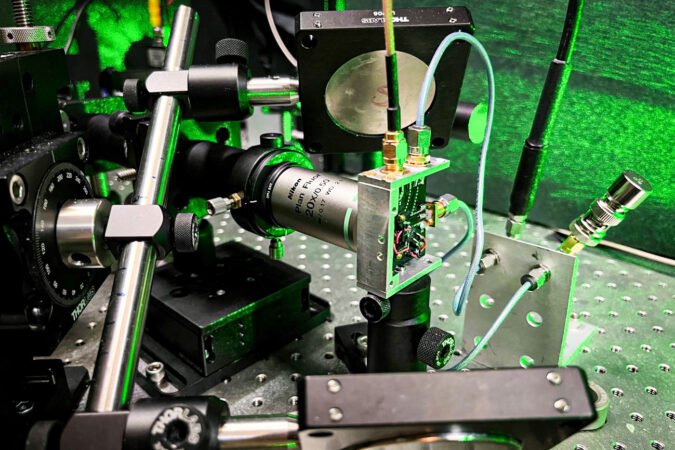Essential Insights
-
Spin Density Tuning in Diamond: Researchers at MIT have demonstrated a method to dynamically tune the spin density in diamond by a factor of two using external lasers or microwaves, enhancing the potential for advanced quantum devices.
-
Nitrogen Vacancy (NV) Centers: The study focuses on NV centers, which are sensitive to external disturbances and have potential applications in quantum sensing and information processing, functioning effectively at room temperature.
-
Innovations in Quantum Sensing: This ability to control spin density allows NV centers to act like atomic-scale sensors for nearby spins, potentially improving the performance of existing quantum sensors and leading to new quantum hydrodynamic studies.
- Future of Quantum Information: The findings lay groundwork for the future of information processing using individual defects or atoms as computational units, aiming to achieve the ultimate limit of Moore’s Law with more expansive data storage capabilities.
New Method Reveals Control Over Spin Density in Diamond
Researchers at MIT and other institutions have achieved a breakthrough in manipulating microscopic spin density within diamond. This advancement opens exciting new avenues for advanced quantum devices, according to a study published in the journal PNAS.
Typically, electronic devices rely on electron charge. However, scientists are increasingly recognizing the potential of spin, a property that could revolutionize technology. Spin defects, particularly nitrogen vacancy (NV) centers in diamond, hold potential for quantum sensors and memory devices. Researchers have long sought a method to control spin density, which can significantly affect material properties.
Now, the MIT team has discovered a way to tune spin density in diamond by a factor of two, utilizing an external laser or microwave beam. The research also included collaboration with students and faculty from the Politecnico of Milano.
Guoqing Wang, the lead author of the study, noted that this new ability to adjust spin density offers a “knob” for scientists to manipulate quantum systems. Wang emphasized that NV centers serve as sensitive detectors due to their responsiveness to physical and optical changes.
This new method gives researchers a profound tool to study quantum dynamics. With enhanced control, NV centers can effectively act as small "radars" that sense surrounding quantum environments. This capability could improve the performance of existing quantum sensors, making them significantly more efficient.
Experts like professor Paola Cappellaro explained that current technology primarily depends on electrical charges. However, a shift toward utilizing spin could reduce energy consumption in devices. Companies like Intel are already exploring spin-based transistors to enhance energy efficiency.
While the research showcases promising results, challenges remain. Wang and his team plan to investigate the underlying physical mechanisms affecting these systems. Their innovative imaging setup allows for simultaneous measurement of various spin properties in the diamond, paving the way for deeper insights.
Looking ahead, these findings could influence various applications, from improving current quantum sensing technologies to potentially redefining information storage. The ability to manipulate individual atoms or defects may represent the next frontier in quantum information science.
Chong Zu, an assistant professor at Washington University, praised the study for introducing a powerful approach to tuning spin defect density. “This advancement could reshape our understanding of quantum simulation and sensing,” he stated.
This research marks a significant step forward for the field of solid-state spin defects and signals exciting possibilities for the future of quantum technologies. The implications of this work suggest a transformative potential in both the scientific community and industry.
Continue Your Tech Journey
Stay informed on the revolutionary breakthroughs in Quantum Computing research.
Explore past and present digital transformations on the Internet Archive.
QuantumV1

